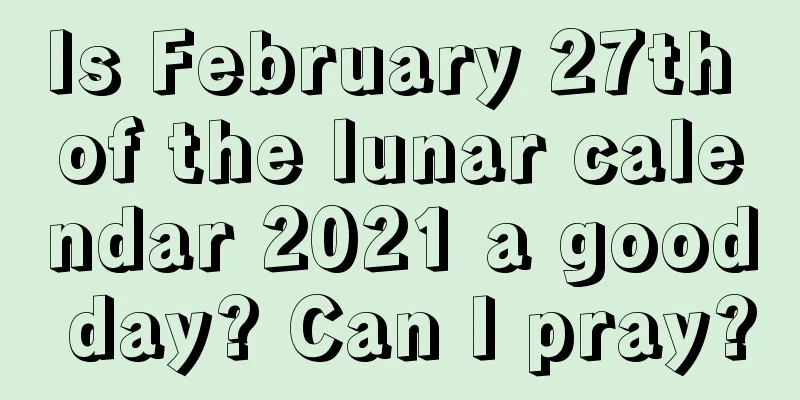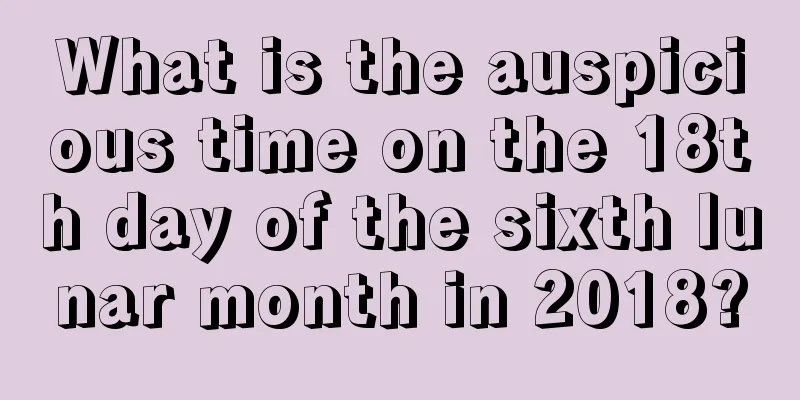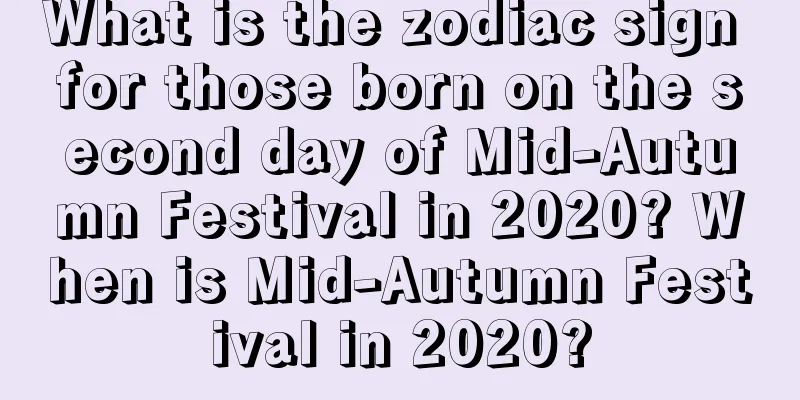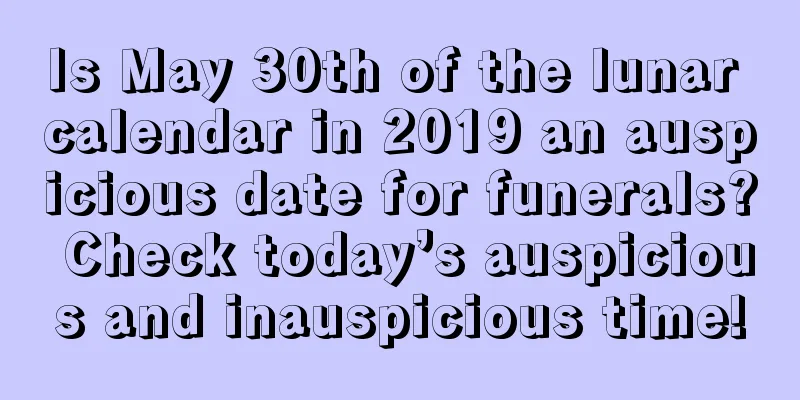How many of Beijing's Feng Shui legends do you know?

Introduction: Beijing is not only the capital of my country throughout the dynasties, but also an ancient cultural city of my country with a history of more than 3,000 years. So what kind of legends does Beijing have, and why did it become the capital of successive dynasties? What kind of Feng Shui story is involved? Let’s take a look at the Feng Shui legends of Beijing!1. Tuotan Temple came first, then Beijing CityTanzhe Temple is located in Mentougou District in the western suburbs of Beijing. It is an ancient temple with a long history. Historical records state that "Tanzhe came first, and Youzhou came later", and there is a folk saying that "Tanzhe Temple came first, and Beijing city came later".Tanzhe Temple was built in the Jin Dynasty more than 1,600 years ago. It was originally called Jiafu Temple. It flourished during the reign of Wu Zetian in the Tang Dynasty and was named Longquan Temple. It was renamed Da Wanshou Temple in the Jin Dynasty and was renamed Xiuyun Temple during the reign of Emperor Kangxi of the Qing Dynasty. According to the "Brief Record of the Lotus Pond of Xiuyun Temple", "The temple was originally located on the Qinglongtan Pond, where there are ancient Zheqianzhang, so it was named Tanzhe Temple." Beijing was developed into the capital during the Yuan Dynasty. At the beginning of the Yuan Dynasty, Kublai Khan followed the advice of General Baturu and Han scholar and strategist Liu Bingzhong, and built the capital in the 13th year of the Yuan Dynasty (1276) on the grounds that "the land of Youyan is a place where dragons coil and tigers crouch, with a magnificent situation. It controls the Yangtze River and Huai River in the south and the desert in the north." Compared with the development of Tantuo Temple in the Jin Dynasty, it was more than 800 years later. The Liao Dynasty once used Youzhou as Nanjing in 916 AD, which was nearly 500 years later than the Jin Dynasty. Even during the Tang Dynasty during the reign of Wu Zetian, it was more than 400 years later than the Jin Dynasty. Therefore, the relationship between Tanzhe Temple and Beijing city as mentioned in the folk proverb is true. 2. CaishikouEveryone in Beijing knows that Zha is a market where you can buy vegetables, but it is actually a place of execution of the previous dynasty, where countless people died. Caishikou used to be a place dedicated to selling vegetables. As early as the Liao Dynasty more than 1,000 years ago, this place was still a suburban area outside Andong Gate. In the Jin Dynasty, Caishikou became a T-shaped street inside Shiren Gate. By the Ming Dynasty, it had become the largest vegetable trading market in the capital. At that time, there were many vegetable stalls and shops selling vegetables along the street. Almost all the people in Beijing came here to buy vegetables. Therefore, everyone called the street with the most concentrated vegetable market Caishi Street. It was not until the Qing Dynasty took over from the Ming Dynasty that this street was officially changed to Caishikou. After this change, the name of this street has been used to this day and has never been replaced. Although Caishikou is a place for selling vegetables, as everyone knows from the name, what really makes this place famous is not because it is a centralized trading market for selling vegetables. Since the Qing Dynasty, this place has become the most famous execution ground in Beijing, and many celebrities at that time were executed here because they offended the authorities. In the past, during the Ming Dynasty, the execution ground was not set at Caishikou, but in the Qing Dynasty, the Qing government changed this place for selling vegetables into a place for killing people. In ancient times, if someone broke a law, he would be dragged out to the Meridian Gate and beheaded. However, the Meridian Gate was very close to the Forbidden City, and the emperor could not let the blood of the criminals stain his home, so he chose the extremely special place of Caishikou as the place for their heads to fall. So after the Qing Dynasty it became a place for beheading criminals. It is said that the Four Gentlemen of the Wuxu Reform were beheaded here.3. Bell-casting LadyIt is said that when the bell tower was being built, in order to tell time in the capital, the emperor ordered the casting of a large bell and summoned craftsmen from all over the world to come to Beijing to cast the bell. After a long time of unsuccessful casting, the emperor became furious and ordered a deadline to cast the bell, otherwise all the craftsmen would be executed. As the deadline approaches and the bell casting fails time and time again, could it be that the old silversmith Hua lacks some "spirituality"? So I begged my father to go to the bell casting site to take a look.On the day of casting the bell, all the court officials and chief craftsmen of all sizes had arrived. They saw the molten copper bubbling in the furnace. After taking samples several times, Master Huayan shook his head. It seemed that the last furnace of molten copper would fail again, and all the craftsmen were about to be beheaded. At this moment, Miss Hua Xian rushed to the stove and said to her father, "Look what's in the sky?" Master Hua looked up and saw colorful clouds floating in the sky. At this time, Hua Xian jumped into the stove. The old coppersmith failed to catch her and only grabbed an embroidered shoe. In an instant, the fire in the furnace rose and the molten copper rolled. Master Hua shouted in pain: "Cast the bell!" The craftsmen worked together and the bell was finally cast. In order to commemorate Miss Huaxian, the "Golden Furnace Holy Mother Bell Casting Goddess Temple" was specially built at No. 24 Xiaoheihu Hutong. There are still ruins to be found. 4. Buddhist Incense Pavilion on Wanshou MountainEveryone knows that there is a Buddhist Incense Pavilion on Wanshou Mountain, but do you know why a Buddhist Incense Pavilion was built on Wanshou Mountain? It is said that the imperial court wanted to build a large garden in the beautiful area of Haidian. The day before was Emperor Qianlong. People say there is an ancient tomb at the foot of Wanshou Mountain. This is the tomb of a princess from the Ming Dynasty. It cannot be touched. One is the teachings left by our ancestors after they entered the Pass; it is said that every blade of grass and every tree in the tombs of the previous dynasty should be protected, because when we, the bannermen, entered the Pass, we took the world from Li Zicheng, and we do not have that much hatred towards the previous dynasty. Secondly, it is said that this concubine was not a good person in her past, and her tomb cannot be moved! After hearing this, Emperor Qianlong said, "What are you afraid of? Just dig it up for me." How could the subordinates dare to disobey? Of course they had to dig. However, they created chaos as soon as they dug. Emperor Qianlong personally went to the scene and saw that the large stone door of the tomb had been dug open. He saw eight large characters engraved on the inside of the door: If you don't touch me, I won't touch you! ! Emperor Qianlong was so frightened that he quickly ordered people to seal the stone door again, cover it with soil, and build a large temple on Wanshou Mountain to suppress the restless ghost. This is the Tower of Buddhist Incense. Conclusion: How about it, did you know about the legends of these places in Beijing before? |
<<: Come and see, placing a fish tank like this in the restaurant can attract wealth
>>: Beijing Feng Shui layout, what kind of Feng Shui creates its magic
Recommend
How about January 14, 2020, the 20th day of the twelfth lunar month? Is it an auspicious day?
How about January 14, 2020, the 20th day of the tw...
Check the lunar calendar for April 12, 2019. Is it a good day?
April is the most beautiful month in the world. A...
What day is the fifth day of the fourth lunar month in 2019? What month and date is it?
April is the most beautiful month in the world. A...
Is it auspicious to get married on the day before the 2020 Winter Solstice? Why is the Winter Solstice a "Little New Year"?
Introduction: Our country has been a traditional c...
What is the Lantern Festival also called? What do people eat in the south during the Lantern Festival?
The Lantern Festival is on the fifteenth day of th...
Is it appropriate to start renovation on October 24th of the lunar calendar in 2017?
Introduction: In traditional Chinese culture, Chin...
What month and day is Frost Descent? Is Frost Descent suitable for opening a business?
Introduction: Frost Descent is one of the 24 solar...
Recommended auspicious dates for engagement in May of the lunar calendar in 2022. Which days are good for engagement?
The fifth month of the lunar calendar is called Mi...
Is the 16th day of the 12th lunar month in 2018 a suitable day for travel? How good or bad?
In contemporary society, high-speed rail, airplane...
Children's Day 2020 - Is it okay to get married on the tenth day of the fourth month of a leap year? Is it not suitable to get married in the fourth month of a leap year?
Introduction: Every day has its own do’s and don’t...
Is the first day of September in the lunar calendar of 2019 an auspicious day for moving?
Is the first day of September in the lunar calend...
What are the taboos on February 19th of the lunar calendar in 2019?
Spring is a great time full of vitality, with eve...
What day is the ninth day of the ninth lunar month in 2019? Is it the Double Ninth Festival?
What day is the ninth day of the ninth lunar mont...
Is August 17th of the lunar calendar in 2018 an auspicious day?
According to Chinese tradition, important events g...
Is August 16th of the lunar calendar in 2018 a good day? Is this day suitable for cutting hair?
Introduction: Cutting hair is a common thing, but ...









